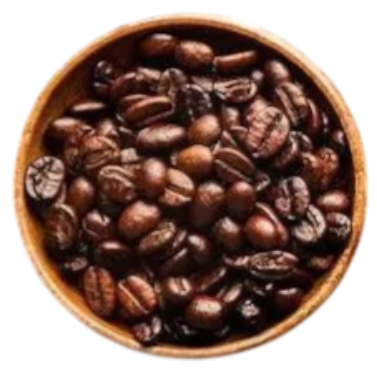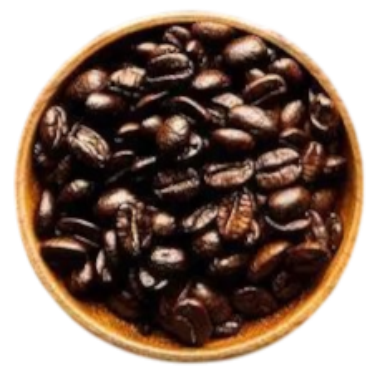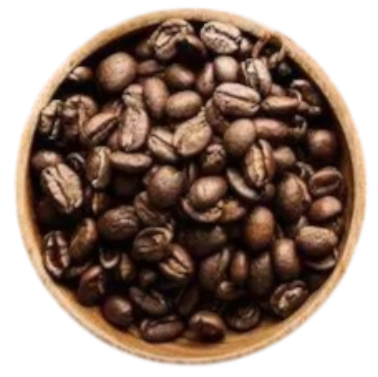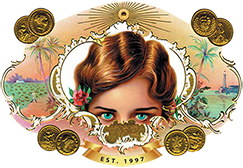 |  |  |  |
ArabicaOriginating from Ethiopia, arabica beans are the most widely cultivated variety. These beans have a smooth, sweet flavor and a flral aroma and thrive in high-altitude regions with significant rainfall and volcanic soil in Latin America, East Africa, and Asia. | RobustaRobusta beans have a strong, bold flavor with earthly and nutty notes and are often more bitter than arabica beans. These resilient beans are more pest- and disease-resistant and thrive in lower altitudes and hotter climates, making them easier to cultivate. | LiberiaOriginally from Liberia, West Africa, these beans are characterized by a strong, woody taste with smoky nuances plus hints of fruity, floral notes. Liberica is often described as sweeter than arabica, and it has the lowest caffeine level among the four types. | ExcelsaA subvariety of liberica. Excelsa beans are a less common type of coffee bean that offer an extra boost of flavor, depth, and intensity. They have a distinctive tart taste and a fruity body, reminiscent of a light roast, and are cultivated in Southeast Asia. |
Coffee 101
Types of coffee beans and roasts, explained
Coffee is one of the most-consumed beverages in the world. The complex, earthy flavors are soothing and comforting, while the caffeine kick helps us get through the day. Coffee is believed to have made its way from Ethiopia across the Red Sea into Yemen in the 15th century. By the 16th century, it was known in Persia, Egypt, Syria, and Turkey. Today, coffee is grown within the “coffee belt,” a geographic region between the tropics of Cancer and Capricorn that includes countries in Central and South America, Asia, and Africa. This area is characterized by its warm and humid climate, with temperatures ranging between 59 F and 75 F and altitudes ranging from 1,968 to 6,561 feet above sea level.
Types of Beans
Coffee packages are often labeled with the type of bean used. This Information is helpful for consumers to identify what to expect in each coffee bean, its characteristics, and what makes it unique. See the images and descriptions above for a deeper dive into each type of coffee bean.
Types of Roast
Understanding coffee on a deeper level can enhance your drinking experience. This is where roasting comes in. Before they’re roasted, all coffee beans are green. Roasting extracts flavors and aromas that are locked inside the beans. There are four categories of coffee roasts, and each has its own characteristics.
Light
When you see this label, it means the coffee beans were roasted for the least amount of time. They are removed from the heat after reaching an internal temperature of about 375F to 385F. Light roasting produces beans that are light brown, have no oil on the surface, and impart a bright and acidic taste, retaining most of the original coffee bean flavors.
Medium
Slightly darker and sweeter than light roasts, this roast is medium brown with a non-oily surface. This is achieved when the beans reach an internal temperature of about 395 F to 410 F. They have a balanced flavor, aroma, and acidity.
Medium-Dark
Rich and dark in color, this roast has some oil on the surface and a slight bittersweet aftertaste. It has a rich, full-bodied flavor and is roasted to an internal temperature of about 412 F to 424 F. It is mostly used for espressos and French press beverages.
Dark
Dark roasts- with a darker color than other roasts- provide bold, smoky flavors with a fuller body and sweeter notes due to the caramelized sugars that result from roasting for extended periods until reaching an internal temperature of about 428 F to 446 F This intense roasting process diminishes the original coffee bean flavors

Storage and Preparation
Store whole coffee beans in an opaque, airtight container in a cool, dark place to preserve freshness and flavor. The right packaging will protect them from oxygen, light, and moisture. which are the main culprits of flavor degradation. Grind beans just before brewing, and match your grind size to your brewing method. Turkish coffee requires extra-fine grind; espresso requires fine grind; drip, pour-over, Siphon, and vacuum require a medium grind; French press requires a coarse grind; and cold brew and cold press require an extra-coarse grind. Pre-ground coffee stays fresh until its best-by date. Once opened, it’s best to consume it within two weeks.
Caffeine Options
There are many single-serve, ready-to-drink coffee options. You’ll find canned coffees, lattes, and cold brews. There are also individual coffee pods, capsules, and single-serve cups. Ways to prepare your dream cup of coffee include using a French press, percolator, single serve, traditional coffee maker, or espresso machine. You can experiment to find the machine and accessories that make a morning brew that suits
your taste.
